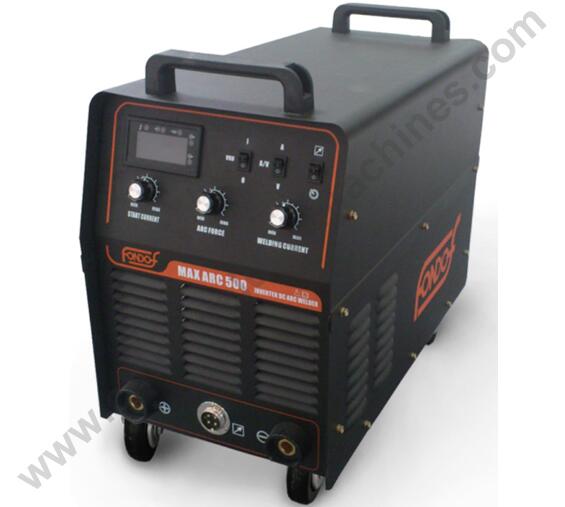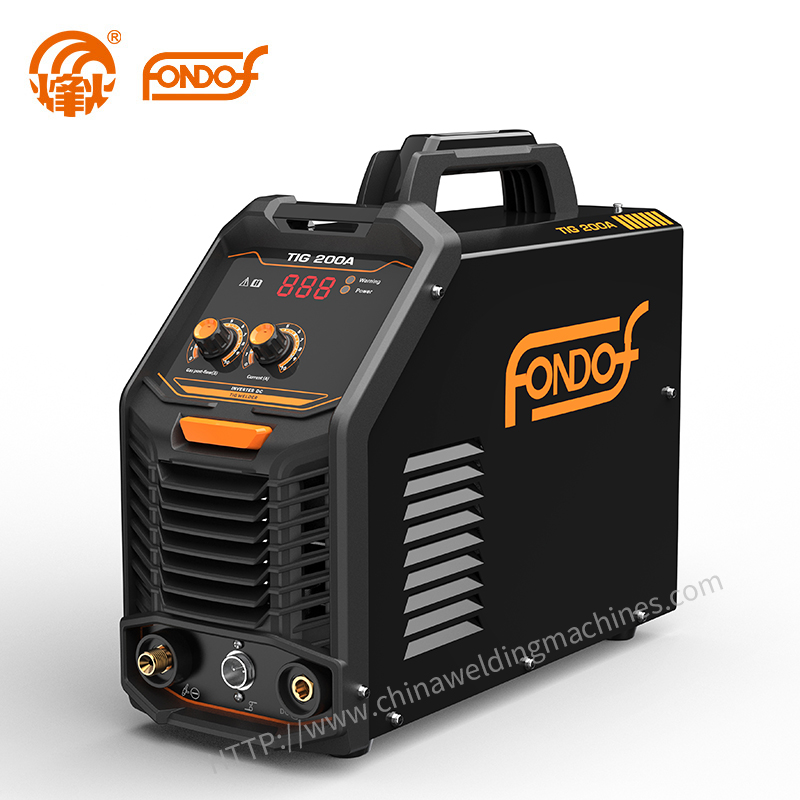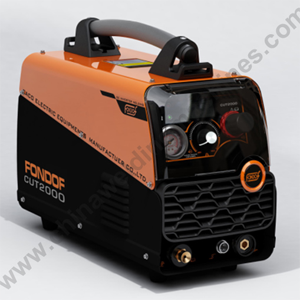How to stop pinholes when TIG welding
 Jan. 20, 2022
Jan. 20, 2022
TIG welding is a great way to join metals and it produces beautiful welds. However, if you are not careful, pinholes may appear in the weld path of TIG welding.
How to stop pinholes when TIG welding?The best way to prevent pinholes when TIG welding is to avoid some common causes, such as
✱ The shielding gas does not protect the bead
✱ Part of the weld is contaminated
✱ Amperage is set too high
✱Welding arc is too long
✱You are pushing the bead too fast
✱The current cuts off too quickly at the end of the weld

Any one of these problems is easy to fix if you know what to look for.
Gas problems
The high temperatures in TIG welding can cause the weld to oxidize in the air. The torch provides a shielding gas that protects the weld from oxygen when it is extremely hot. If the gas is not distributed correctly, pinholes and cracks can result. What can destroy the shielding gas?
The gas is not turned on.
We've all done this before. If the gas is not turned on, the arc will produce more sparks and spatter. Make sure the gas is turned on when you start welding.
Wrong flashlight angle.
The torch should be held vertically to allow the gas to flow directly over the arc and weld. If the torch is tilted too far away, the shielding gas will not cover the arc and the weld will be unprotected. This can lead to pitting and cracking of the joint. The effect is the same as not using gas at all.
Poor gas flow.
Not enough gas is flowing out to cover the arc and weld seam, resulting in pinholes and spatter. Adjust the airflow according to the manufacturer's instructions. If the flow rate is set correctly, make sure the tank is not empty.
Gas delivery problem.
If the gas is turned on, the tank is full, and the flow rate is adjusted correctly, check the hose for kinks or leaks that could reduce the flow to the nozzle. Make sure all connections are tight and that gas is not leaking anywhere. Spraying soapy water on the connections can help you find leaks.
Too much gas
This can also be a problem if the gas is flowing too fast, as it can create turbulence. If the gas flow is too fast, the current can break the weld pool and cause pinholes or cracks. It's like the wind making waves on a lake. This is primarily a problem with aluminum.
The gas is contaminated with moisture.
If the gas cylinder is not handled properly, moisture can mix with the shielding gas. This is rare, but does happen from time to time. Make sure the gas company has properly cleaned the bottles and filled them with welding grade gas.
Airflow or wind
Fast moving air can disrupt the flow of shielding gas and cause oxidation. tIG welding is best done inside. If you must work outdoors, make sure you have adequate protection from the wind. Do whatever you must to protect your flashlight from the wind use a tarp, cardboard or whatever you can to block the wind so you can weld without interference.
Contamination
Getting a good weld requires all metal to be clean and free of contaminants. Paint, oil, grease and rust can all cause pinholes to form in the weld channel. This is especially important in TIG welding. Rods and electrodes used for TIG welding do not have any flux to clean the weld or deal with contaminants. You must get everything clean before you crack the arc.
Cleaning the Workpiece
Ideally, you should weld clean, shiny metal. Use acetone or paint thinner to remove paint. Use a degreaser to remove oil and grease. After using a cleaner to remove all traces of solvent, wipe the metal with a clean rag.
Pro Tip: Make sure you put the solvent away before you weld! You do not want flammable materials near a torch at 6,000 degrees.
Use a grinder
Rust and corrosion can also inhibit a good weld. If the surface is rusty, use a bench or angle grinder to polish the part and knock off the rust to get a good surface. Continue grinding until the metal shines.
If there are any cracks or chisels in the surface, special attention is needed. Cracks usually contain grease and dirt. If you are repairing a cracked metal surface, be sure to put a grinding wheel into the crack to remove any impurities hidden at the bottom of the crack.
Treating Oxidation on Aluminum
Aluminum has a thin coating of aluminum oxide on its surface. This layer can interfere with your welds and can cause pinholes and pits. Wipe off the oxide layer with a stainless steel wire brush, or use a chemical cleaner to remove the surface of the oxide layer.
Once the aluminum is clean, weld quickly. Do not allow the aluminum to sit for more than a day after removing the oxide layer, or air will cause the oxide layer to re-form. If this happens, you must clean it again.
Clean the electrode
Electrodes can be contaminated by welding spatter, especially when welding dirty metal. Clean the electrode and remove the spatter so that you have a pure tungsten electrode tip.
Resharpen/reshape the electrode
TIG welding requires the correct electrode tip shape. Some welds work better with a tip, while others require a round tip. Overheating can distort the end of the electrode and cause problems with the weld. Reshape your electrode as needed to get the best weld results.
Use clean, dry fuel rods
Make sure your rod is clean and dry. Store the rod in an airtight container and away from contaminants. If your metal is clean and you are still experiencing problems, try cleaning your rod with acetone or degreaser to be sure.
You can use almost any small metal rod as a filler for TIG welding. It is best to use a filler rod of known quality that matches the metal you are welding. If weld quality is critical, do not attempt to weld with stripped wire or the remainder of a metal rod.
Beware of high-carbon steels
Carbon in high-carbon steels (e.g., hot-rolled materials, springs and tool steels) can become a contaminant in the weld. Some welding processes contain flux to help clean the weld, but TIG welding rods do not. You must carefully select the electrode for TIG welding of high-carbon steels.
The best filler rod for TIG welding high-carbon steels is AWS ER70-S2, which is formulated to clean the weld seam in high-carbon steels, even though the base material itself contains impurities.
Too much current
Welding with too high an amperage setting generates too much heat. The extra heat can cause failures in the weld channel, including pinholes. Refer to the welder's manual for proper metal settings. Follow the instructions to adjust the welder for best weld quality.
Arc too long
Placing the electrode too far away from the weld pool can cause the weld channel to heat up, which can lead to problems with the weld channel. Place the electrode close to the workpiece. The ideal distance from the electrode to the weld pool is the thickness of the electrode. For most TIG welds, this is 1/16 inch ...... which is about the thickness of a dime. Keep the electrode close to the weld channel for a clean weld.
Moving too fast
If you move too fast, gaps and pinholes may appear in the bead. Keeping a steady rhythm of moving the electrode, push the rod into the puddle, then pull the rod back. If you want nice beads with no holes or cracks, do not rush.
End slowly
If you cut the arc too quickly at the end of the weld, pinholes will form. Instead of cutting the arc quickly, use a pedal or hand control to slowly taper the arc. Some welders have a built-in feature that will narrow the arc for you. Slowly reducing the arc allows the bead to cool at the correct rate, leaving a smooth end with no pinholes.



























